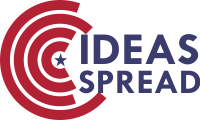Using Classroom Video in Designing Open-ended Problem Situations
Abstract
Teacher and teacher trainees have been introduced to practice Thailand Lesson Study incorporated Open Approach Model as the problem-solving-based teaching approach for the past two decades. The problem-solving-based teaching approach has to begin with posing open-ended problem situation in order to encourage students to solve the problem independently using their own method. Therefore, open-ended problem situation design is considered a key factor for teachers or teacher trainees to provide sufficient opportunities to students’ learning experiences in solving the problems (Inprasitha, 2017). As a result, this research was aimed to use video recordings of classroom teaching and experts’ reflection practice to analyze teacher trainees’ abilities in designing open-ended problem situations. A total of 10 teacher trainees were selected from the Department of Mathematics (English Program), Faculty of Education, Valaya Alongkorn Rajabhat University under the Royal Patronage using a purposive sampling technique. A multi-cases study survey research design was employed using a qualitative approach. There were four research instruments used, namely lesson plan, video and audio recording, field notes, and interview protocol. Data were collected using various sources such as research lesson plans, audio, and video recording as well as interviewing. The results revealed that teacher trainees utilized classroom teaching videos to support them in clarifying indecisive problem situations, revising the sequence of teaching, and modifying appropriate words used in giving the direction of the problem situations. On the other hand, the experts’ reflection video has successfully assisted them to have a better understanding of mathematical contents in problem-solving teaching approach and teacher trainees’ intention of each action in the learning activities.
References
Causton-Theoharis, N., Theoharis, G., & Trezek, B. (2008). Teaching pre-service teachers to design inclusive instruction: A lesson planning template. International Journal of Inclusive Education, 12, 381-399. https://doi.org/10.1080/13603110601156509
Darling-Hammond, L., & Bransford, J. (Eds.). (2005). Preparing teachers for a changing world: What teachers should learn and be able to do. San Francisco, CA: Jossey-Bass.
Franke, M. L., & Kazemi, E. (2001). Teaching as learning within community of practice: Characterizing generative growth. In T. Wood, B. S. Nelson, & J. Warfield (Eds.), Beyond classical pedagogy: Teaching elementary school mathematics (pp. 47-74). Mahwah, NJ: Lawrence Erlbaum.
Goodlad, J. I. (1990). Teachers for our nation’s schools. San Francisco, CA: Jossey-Bass.
Henningsen, M., & Stein, M. K. (1997). Mathematical tasks and student cognition: Classroom-based factors that support and inhabit high level mathematical thinking and reasoning. Journal for Research in Mathematics Education, 28, 524-549. https://doi.org/10.2307/749690
Hiebert, J., Morris, A., Berk, D., & Jansen, A. (2007). Preparing teachers to learn from teaching. Journal of Teacher Education, 58, 47-61. https://doi.org/10.1177/0022487106295726
Inprasitha, M. (2004), Teaching by using open approach in mathematics classroom of Japan. KKU Journal of Mathematics Education, 1, 3.
Inprasitha, M. (2009). Lesson study: Innovation for developing teacher and students. Doctor of Education thesis. Khon Kaen, Thailand: Khon Kaen University.
Inprasitha, M. (2011). One feature of adaptive lesson study in Thailand: Designing a learning unit. Journal of Science and Mathematics Education in Southeast Asia, 34(1), 47-66.
Inprasitha, M. (2014). Processes of problem solving in school mathematics. Center for Research in Mathematics Education (CRME), Faculty of Education, Khon Kaen University, Thailand: Pen printing. [in Thai]
Inprasitha, M. (2017). Lesson Study and Open Approach innovations for enhancing classroom quality and kyozai kenkyu in Lesson Study and Open Approach. Paper presented at Workshop for School Teachers in the Project of Students’ Mathematical Higher Thinking Development in Northeastern of Thailand, Khon Kaen University, Khon Kaen, Thailand. [In Thai]
Lampert, M., Beasley, H., Ghousseini, H., Kazemi, E., & Franke, M. (2010). Using designed instructional activities to enable novices to manage ambitious mathematics teaching. https://doi.org/10.1007/978-1-4419-0594-9-9_
Manmai, T., Inprasitha, M., Changsri, N., & Pattanajak, A. (2020). Development of reasoning habits through Lesson Study and Open Approach teaching practices. International Educational Research, 3(2), 29-36.
National Commission on Excellence in Education. (1983). A nation at risk: An imperative for educational reform. A Report to the Nation and the Secretary of Education United States Department of Education.
Nohda, N. (2000). Teaching by open-approach method in Japanese mathematics classroom. Proceedings of the Conference of the International Group for the Psychology of Mathematics Education (PME), Hiroshima, Japan, July 23-27, Volume 1, ERIC ED 466 736.
Pal, A., & Poyen, E. F. (2017). Problem solving approach. International Journal of Advanced Engineering Research and Science, 4(5), 184-189. https://doi.org/10.22161/ijears.4.5.29
Paul, A. B. (2019). Personalized professional development: Lesson Study helps teachers improve by focusing on collaboratively planning and revising a single lesson. Retrieved from Lesson Study: Personalized, Research-Based Professional Development | Edutopia
Ruys, I., Van Keer, H., & Aelterman, A. (2012). Examining pre-service teacher competence in lesson planning pertaining to collaborative learning. Journal of Curriculum Studies, 44. https://doi.org/10.1080/00220272.2012.675355
Santagata, R., Zannoni, C., & Stigler, J. (2007). The role of lesson analysis in pre-service teacher education: An empirical investigation of teacher learning from a virtual video-based field experience. Journal of Mathematics Teacher Education, 10, 123-140. https://doi.org/10.1007/s10857-007-9029-9
Seago, N. (2004). Using video as an object of inquiry for mathematics teaching and learning. In J. Brophy (Ed.), Advances in Research on Teaching Volume 10: Using Video in Teacher Education. London, UK: Emerald Group.
Tall, D. (2008). Using Japanese lesson study in teaching mathematics. The Scottish Mathematical Council Journal, 38, 45-50.
Thinwiangthong, S., Eddy, C. M., & Inprasitha, M. (2020). Mathematics teachers’ abilities in developing formative assessment after the introduction of lesson study and open approach innovations. Malaysian Journal of Learning and Instruction, 17(1), 101-132.
van Es, E., & Sherin, M. (2010). The influence of video clubs on teachers’ thinking and practice. Journal of Mathematics Teacher Education, 13, 155-176. https://doi.org/10.1007/s10857-009-9130-3
Wang, J., & Hartley, K. (2003). Video technology as a support for teacher education reform. Journal of Technology and Teacher Education, 11(1), 105-138.


This work is licensed under a Creative Commons Attribution 4.0 International License.
Copyright for this article is retained by the author(s), with first publication rights granted to the journal.
This is an open-access article distributed under the terms and conditions of the Creative Commons Attribution license (http://creativecommons.org/licenses/by/4.0/).








1.png)

















